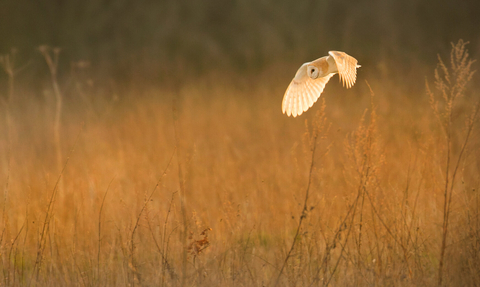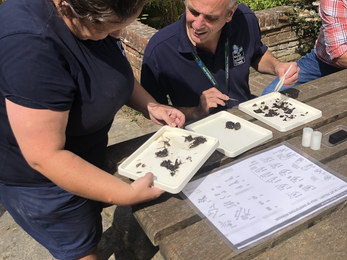
Jon Hawkins - Surrey Hills Photography
Birds of Prey Discovery Lab
Dissect owl pellets in this exciting, hands-on workshop and investigate the food chains of Kent.
As apex predators in Kent, owls sit at the top of the food chain and are therefore a great way for investigating food webs. In this new and exciting workshop, children will get the chance to learn about the inter-relationships between predator and prey and learn about the transfer of energy through the food chain. During the session, children will work in groups to dissect owl pellets and use the bones they find within to identify what species of mammals, amphibians and invertebrates the owls have been eating. Children love the chance to get hands-on with science and are fascinated by what they can discover from the owl pellets.
- Venue: Available at Tyland Barn Nature Park and Sevenoaks Wildlife Reserve.
- Setting: Covered teaching shelter and indoor classroom.
- Time: 50 minutes – 90 minutes (depending on number of groups per visit).
National Curriculum Links
Our Birds of Prey session can aid in the learning of the following Key Stage 1 and 2 Science curriculum links and can also be adapted for Key Stage 3 and 4 learners. If there are specific curriculum objectives you are hoping to achieve during your visit, please contact our education team in advance on [email protected] or talk to one of our tutors on the day.
Year 2: Living things and their habitats
- explore and compare the differences between things that are living, dead, and things that have never been alive
- identify that most living things live in habitats to which they are suited and describe how different habitats provide for the basic needs of different kinds of animals and plants, and how they depend on each other
- identify and name a variety of plants and animals in their habitats, including microhabitats
- describe how animals obtain their food from plants and other animals, using the idea of a simple food chain, and identify and name different sources of food.
Year 2: Animals including humans
- find out about and describe the basic needs of animals, including humans, for survival (water, food and air)
Year 3: Animals including humans
- identify that animals, including humans, need the right types and amount of nutrition, and that they cannot make their own food; they get nutrition from what they eat
- identify that humans and some other animals have skeletons and muscles for support, protection and movement
Year 4: Living things and their habitats
- recognise that living things can be grouped in a variety of ways
- explore and use classification keys to help group, identify and name a variety of living things in their local and wider environment
Year 4: Animals, including humans
- construct and interpret a variety of food chains, identifying producers, predators and prey.
Year 6: Evolution and inheritance
- identify how animals and plants are adapted to suit their environment in different ways and that adaptation may lead to evolution.





